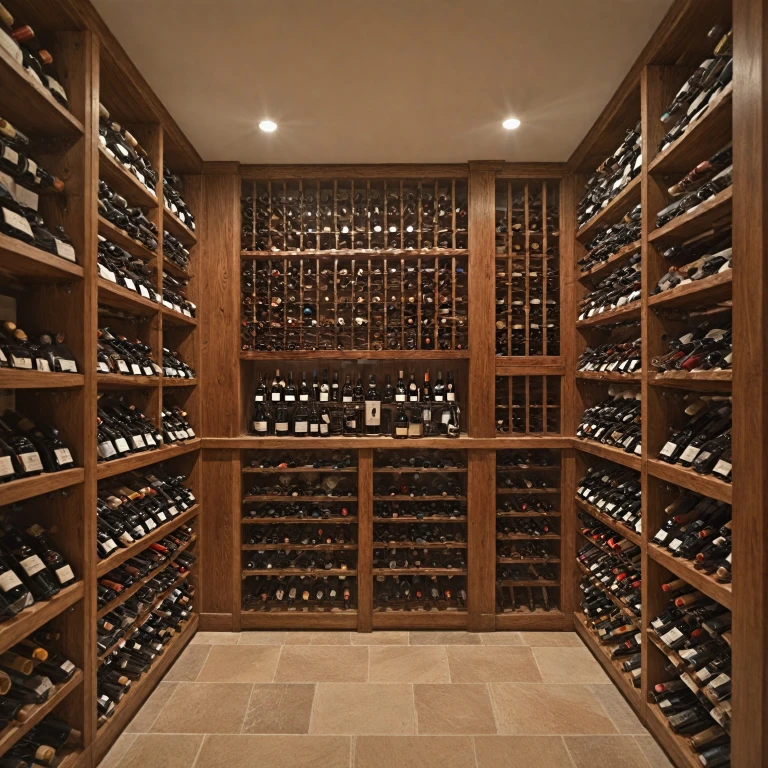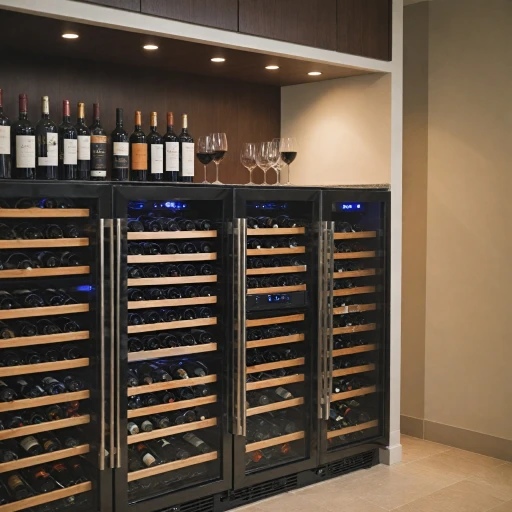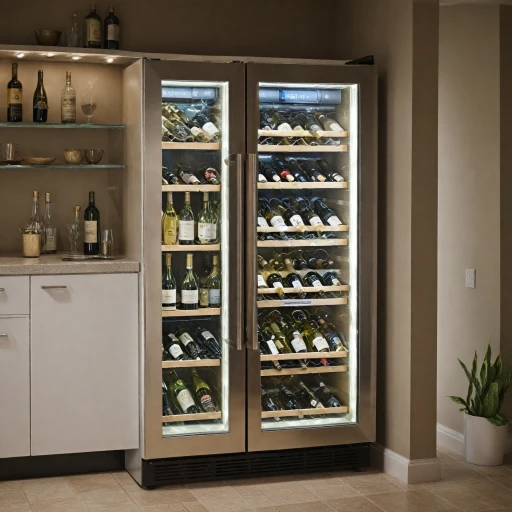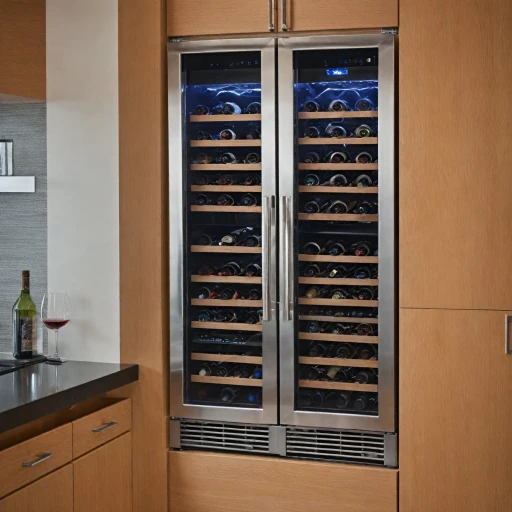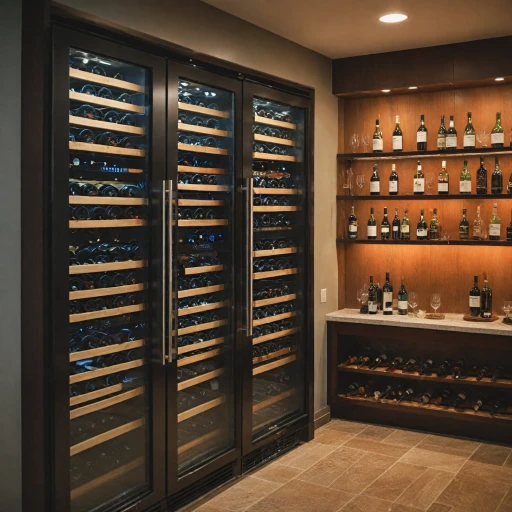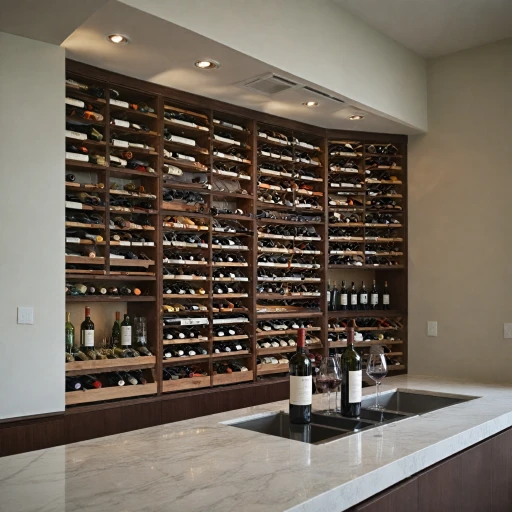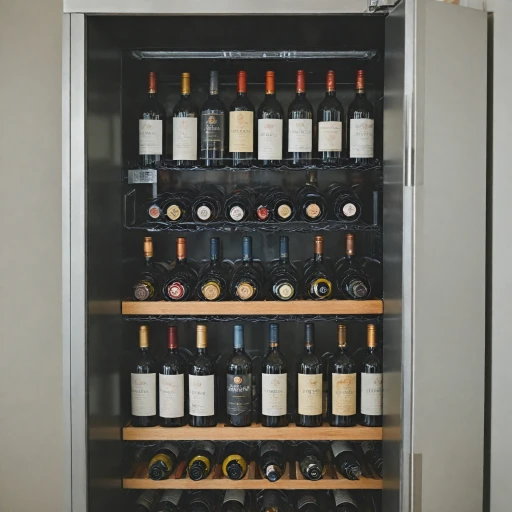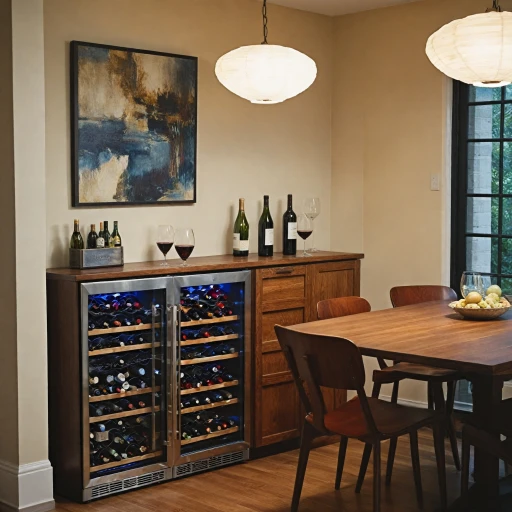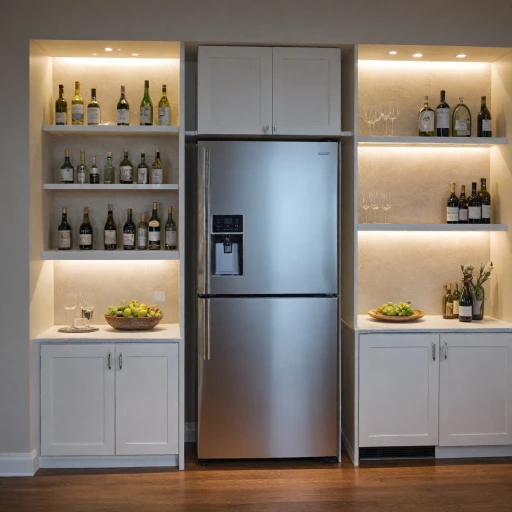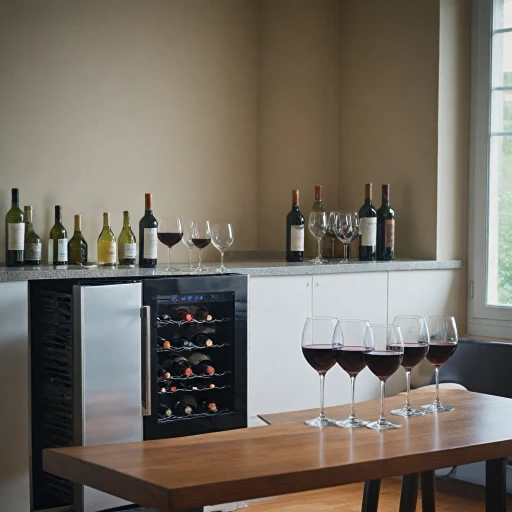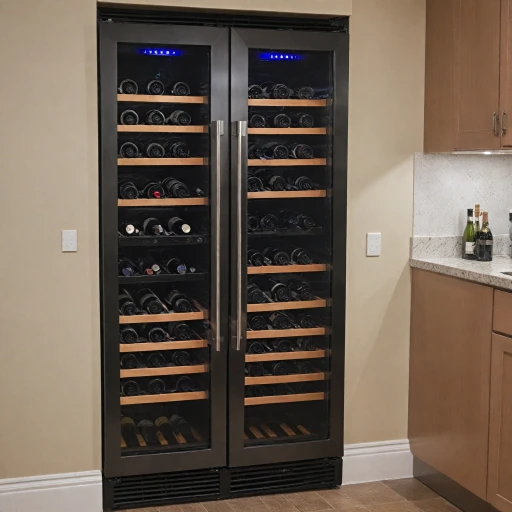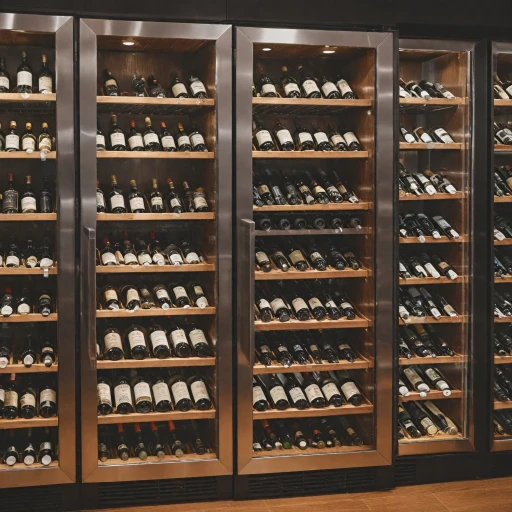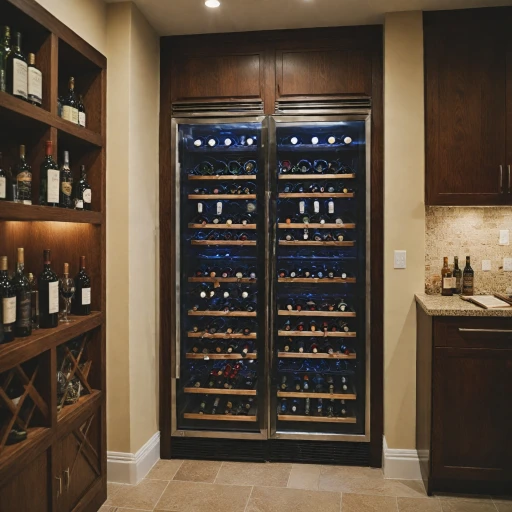
Understanding the Importance of Temperature Control
The Crucial Role of Temperature Control in Wine Storage
Maintaining precise temperature control is indispensable for those who wish to preserve their wine collection, as it directly impacts the longevity and quality of their treasures. Wine enthusiasts understand that the relationship between temperature and wine is a delicate one, often dictating the shelf life and taste profile of their bottles. Properly storing wine requires more than just a cool room; it demands a consistent environment to prevent damaging chemical reactions that occur at fluctuating temps.
Temperature is not just a number, but rather a pivotal aspect of wine storage. Storing wine at room temperature, for instance, exposes bottles to potential degradation, especially during summer months when higher temperatures can accelerate aging. Wines stored at inappropriate degrees will age many times faster than intended, compromising the wine's structure. Using a dedicated wine cellar or wine cooler can help regulate these fluctuations.
With higher storage temperatures, the wine's chemical integrity is at risk, leading to adverse effects on flavor and aroma. It's essential to stick to recommended temperatures, not just based on personal preference but rooted in the science of wine chemistry over the years. Maintaining an optimal range will ensure wines are preserved in their intended state for a long term enjoyment. For detailed guidance on these temperature nuances, refer to our detailed article on optimal temperature settings for white wine.
Temperature management includes being mindful of the air quality and humidity wine requires. An optimal balance in humidity levels prevents corks from drying out, which can lead to spoilage. Complementing this with a reliable cooling system ensures that wines will remain safe and stored correctly.
Optimal Temperature Range for Different Wines
Finding the Right Temperature for Your Collection
The optimal temperature range for storing wine is crucial to maintaining its quality and ensuring it ages gracefully. Each type of wine has a specific temperature at which it thrives, enhancing its unique flavors and aromas. While red wines are generally stored at a slightly higher temperature than whites, there is a delicate balance to be struck.
Most wine connoisseurs agree that red wines should be stored at temperatures between 55-65 degrees Fahrenheit. This range allows the complex chemical reactions to slowly develop, preserving the integrity and nuances of the wine. Storing red wines at higher temperatures can accelerate these reactions, sometimes resulting in undesirable flavors developing faster than anticipated.
On the other hand, white wines and sparkling wines should ideally be stored at a cooler temperature, within 45-50 degrees Fahrenheit. This helps preserve their crisp and refreshing profile, preventing chemical alterations that could lead to a dull or muted experience.
It's important to note that wine is sensitive not only to temperature but also to fluctuations. Frequent changes in temperature can be damaging, causing the wine to expand and contract, potentially compromising its seal and quality. Ensuring a consistent storage temperature is paramount, regardless of whether you're looking into short-term or long-term storage solutions.
For those interested in ensuring the perfect environment for their wine, a cooling system tailored to their collection is indispensable. To delve deeper into how to optimally set your wine storage, check out this guide on finding the perfect temperature for your wine cooler. By taking these factors into consideration, wine enthusiasts can ensure their wines are stored in the best possible conditions.
Common Mistakes in Wine Cellar Temperature Management
Steering Clear of Temperature Pitfalls
Managing the storage temperature for storing wine can be more intricate than it seems. Often, wine enthusiasts make common errors that can disrupt the delicate balance required for optimal storage. Let’s delve into the slips to avoid while mastering the ideal conditions for your wine cellar.
One frequent mistake is sticking to room temperature as a standard. This can prove damaging for long-term storage, as higher temperatures can accelerate chemical reactions within the wine, diminishing its quality over time. If wine is stored at room temperature, it may age too rapidly, losing its complexity and depth years earlier than intended. This is especially crucial for red wines, where a controlled environment is key to preserving their nuanced flavors.
Another error is forgetting about the importance of temperature consistency. Wines will fare best when maintained at a stable storage temperature, preventing harmful temp fluctuations that could compromise their integrity. Fluctuations can force air past the wine bottle’s cork, leading to unwanted oxidation. For both long and short term storage, proper temp regulation is pivotal in ensuring that wines stored reach their aging potential.
The environment’s humidity also plays a critical role. Wine cellars need the right level of temperature humidity to protect the wine and the cork. Too little humidity can dry out the corks, allowing air to seep in, while too much can encourage mold growth on the labels and packaging.
Lastly, the summer months present a challenge with the soaring temperatures. A poorly managed cellar can expose wines to higher temperatures when cooling systems lag behind the ambient air, making temp regulation during these times crucial.
For those intent on perfecting their wine storage technique, it’s worth exploring how to enhance your wine experience with the right gear and knowledge. With careful attention to potential missteps, you can steer your collection clear of the common pitfalls and maintain a perfect sanctuary for your wine bottles year-round.
Tools and Technology for Temperature Regulation
Advanced Solutions to Ensure Perfect Storage Temperature
Maintaining the ideal temperature for storing wine goes beyond just setting and forgetting. With the right tools and technology, you can effectively manage the storage temperature to ensure your wine maintains its quality over the years.
1. Wine Coolers and Refrigerators: Investing in a good wine cooler or refrigerator is fundamental for both short term and long term wine storage. These units are designed to maintain steady temperatures, crucial for preserving the wine's delicate chemical balance. Unlike everyday refrigerators, wine coolers provide a stable environment, reducing the risks of damaging temperature fluctuations.
2. Digital Thermostats: Digital thermostats are equipped to monitor the cellar's temperature precisely. They allow you to set the desired temp in degrees, helping in maintaining the recommended storage temperature specific to your wines. By sticking to the optimal temperature range, wines stored this way retain their intended flavors and aromas.
3. Cooling Systems: Advanced cooling systems help regulate not only temperature but also humidity wine levels within your cellar. High humidity can lead to mold, whereas low humidity might dry out corks, both of which can be detrimental to your wine bottles. Implementing a cooling system ensures a balanced environment that mitigates these risks.
4. Air Circulation Management: Ensuring proper air circulation within your wine cellar is as crucial as controlling the temperature. Implementing strategies to enhance air flow can prevent hot spots that might result in unwanted temperature variations and expedite chemical reactions that could degrade the wine quality.
These tools not only help you manage your storage temperature effectively, but they also equip your wine collection to withstand seasonal changes and maintain their quality regardless of the time of year. An important consideration is also the difference in storage requirements between red wines and others, as each variety may have its optimal storage conditions.
Seasonal Adjustments for Wine Cellar Temperature
Preparing for Seasonal Temperature Changes in Your Wine Cellar
As the seasons transition, maintaining the optimal temperature in your wine cellar presents unique challenges. Proper temperature regulation during summer months requires increased attention, ensuring your wines are stored in conditions that ensure their longevity and quality. During warmer months, higher temperatures can cause detrimental effects on your wine storage, accelerating chemical reactions that can spoil your collection. Summer often presents a challenge for many wine enthusiasts, as the external heat can affect the internal environment of a wine cellar, pushing storage temperature above the ideal range for long-term preservation. To combat these fluctuations, it's crucial to implement several strategies:- Monitor Temperature: Constant monitoring of the wine cellar temp is essential, particularly during summer. Consider investing in digital thermometers or smart devices that alert you to any deviations in temperature.
- Insulate Your Cellar: Proper insulation can prevent summer heat from penetrating your wine storage area. Effective insulation maintains an even temperature, protecting your cherished collection.
- Adjust the Cooling System: During hotter months, your cooling system might require adjustment. Ensure that it is set to maintain a stable degree, around 55°F (13°C), which is generally considered suitable for most wines stored long term.
- Control Humidity: Besides temperature, humidity plays a significant role in wine storage. Keeping humidity levels between 50-70% helps protect cork integrity, preventing the damaging effects of dry corks that can allow air into the wine bottle.
The Impact of Temperature Fluctuations on Wine Aging
The Effects of Temperature Shifts on Wine Development
Temperature fluctuations can greatly affect wine aging. Consistent storage conditions are crucial as wines mature over years. Wine trapped in an unstable environment with temperature swings risks an acceleration of chemical reactions. A few degrees of variance can have significant consequences.- Rapid Aging: Temperature fluctuations, especially during summer, might prompt wines to age years before their time. A wine bottle exposed to higher temperatures may mature several times faster than one in a stable cellar.
- Chemical Changes: Inconsistent storage temperature interferes with the chemical balance, leading to unwanted changes in flavors and aromas. This impact is more profound in wines stored long-term.
- Impact on Corks: Variations in temp and humidity wine conditions can also lead to corks expanding and contracting, allowing air into the bottle. This intrusion may spoil the wine.
